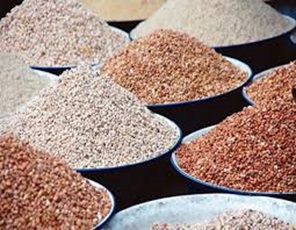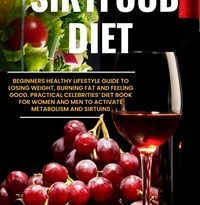Examples Of Whole Grain Foods in Nigeria
Examples Of Whole Grain Foods in Nigeria
Whole grain products including wheat, oats, and brown rice are referred to as brown carbs. Whole grain meals in Nigerian cuisine, such as semolina and Ofada rice, are generally more nutrient-dense than starchy white carbs like yam, cassava, and white rice.

Grains are the edible seeds of several grass species. Because they are consumed nearly daily and constitute a major portion of most people’s diets, they are recognized as staple foods. In Nigeria, we consume a lot of cereals. Grain varieties include wheat, quinoa, rice, millet, and others.
Grains are separated into three sections: the endosperm, which is where nutrients are kept, the germ, or embryo, and the bran, or outer layer. Not every grain has all three components whole. Whole grains are those that meet this requirement.
Table of Contents
Whole Grain Foods
Compared to ordinary grains, whole grains are thought to be more nutrient-dense and healthful. They are abundant in iron, phosphorus, magnesium, manganese, and other elements in addition to carbohydrates.
Whole grains are frequently advised for persons with conditions like diabetes and cancer who are advised to avoid conventional grains. Whole grains are just thought to be healthier, even if normal grains are not in any way inferior.
We’ll be examining seven nutritious whole grain foods in Nigeria in today’s topic.
- Brown Rice
Brown rice contains all three components, however, white rice lacks the bran and germ, making it not regarded as a whole grain.
For this reason, people with diabetes and other illnesses are frequently advised to use it. Because brown rice is gluten-free, it’s also a fantastic option for people who avoid gluten.
It also contains additional vitamins, minerals, and fiber. Antioxidants are also included in it. Because of all of these, it’s a healthy choice.
You might consider switching from conventional white rice to brown rice, often known as ofada rice since it is less expensive in Nigeria than white rice.
- Millet
Another well-liked whole grain that has several applications is millet. It’s used in the north to make fura, a sort of balled meal that’s served with local yogurt called nono.
Other grains and pap are also made from millet. Kunu Zaki, a kunu drink, can be made using millet. However, it is also edible when cooked, much like rice.
In addition to being high in minerals like zinc, potassium, and magnesium, millet is also free of gluten. Consuming millet lowers inflammation in the body and helps regulate blood sugar levels.
- Oats
Who is not a fan of oats? Oats are not only a delicious breakfast option, but their whole grain content contributes to their health benefits.
Oats’ high fiber content prolongs feelings of fullness. This makes it ideal for anyone looking to cut back on eating frequency as well as those trying to lose weight.
Beta-glucans, a type of fiber that facilitates digestion, are also abundant in oats. Constipation and other gastrointestinal issues are avoided as a result.
- Corn
Corn is a different whole grain that is popular. In Nigeria, there are numerous methods to consume maize, such as boiling, roasting, and other preparations.
Eating corn is more gratifying because it is a whole-grain food, which makes it a terrific treat. Yellow or sweet maize has a higher mineral and nutritional content.
- Popcorn
In addition to being a popular snack, popcorn is one of the most widely consumed whole grains in Nigeria. Popcorn is indeed a full grain.
Entire grains, known as popcorn kernels, are dried until their moisture content is just ideal for popping.
Fiber, manganese, magnesium, copper, phosphorus, zinc, and B vitamins are all abundantly present in popcorn.
On the other hand, since premade microwaveable popcorn bags may contain hazardous chemicals, you should steer clear of them.
- Acha (Fonio)
The oldest cereal to be cultivated on the continent is said to be the ancient African grain known as fonio.
It is also referred to as Acha, or hungry rice, and is grown throughout Nigeria.
Since acha is often consumed whole, it is regarded as a whole grain.
In addition to being naturally gluten-free, it is a fantastic source of plant-based amino acids and may help control blood sugar levels.
Read Also: Vitamin-d-foods-to-add-to-your-diet/
- Whole-wheat flour
One kind of flour that comes from grinding or mashing the entire grain of wheat is called whole-wheat flour.
Generally, while baking breads and other baked items, whole-wheat flour is utilized.
Every whole wheat product is made from whole grains and is very high in fiber.

Summary
Grains classified as whole contain the endosperm, germ, and bran. Eating foods made from whole grains has numerous health benefits and is also very nutritious.
In Nigeria, popcorn, brown rice, oats, millet, and corn are a few common whole-grain foods.
What are 10 whole grain foods?
Choosing whole grains
- Barley
- Bulgur, also called cracked wheat,
- Black rice.
- Brown rice.
- Red rice.
- Millet
- Farrow
- Quinoa
What are examples of whole grains?
The bran, germ, and endosperm are all parts of the grain kernel that make up whole grains. Brown rice, oatmeal, bulgur (cracked wheat), and whole-wheat flour are a few examples of whole grains.
Which five grains are the healthiest?
Even more difficult-to-find things can be ordered online.
- Bulgur.
- • Barley.
• Ferro.
• Millet.
• Whole Oats.
• Quinoa. This adaptable, gluten-free grain is an edible seed, and is pronounced “KEEN-wah.”
• Sorghum.
• Teff. These little grains of goodness contain iron and other minerals in addition to a pleasant, nutty flavor.
What are 5 wholegrain products?
varieties of cereals, whole grains, and grains
Brown rice, bulgur, quinoa, couscous, popcorn, oatmeal, dark “seedy” breads, wholegrain morning cereals, wheat germ, and puffed whole grains are examples of wholegrain foods.
Is rice a whole grain?
Entire: Like other entire grains, rice has three edible parts by nature: the bran, the germ, and the endosperm (which is the detached, inedible hull).
The common whole grain rice is called “brown” rice; however, this does not refer to a specific variety, but rather the grain’s inherent color.
What are the 7 main whole grains?
While there are many different kinds of grains, the most popular ones include quinoa, buckwheat, rice, oats, wheat, barley, and millet.
Generally, there are two types of grain foods: whole and refined.
What grain can I eat every day?
Nutritionist Malena Perdomo, MS, RDN, CDE, has identified the top 11 healthiest grains to consume.
oats, barley, quinoa, amaranth, bulgur wheat, farro, and oats wheat.
Are beans whole grains?
They’re not. Although beans are a fantastic source of protein, whole grains offer more antioxidants than beans.
While beans lack certain essential nutrients that help prevent cancer and heart disease, they nevertheless contain fiber, B vitamins, iron, and protein, just like whole grains.
Which grain is best for a daily diet?
Because they are high in fiber, quinoa, oats, and fowl may be the healthiest grains. Despite its many health benefits, fiber isn’t the most glamorous nutrient to discuss, according to Mohr.
Dietary fiber facilitates digestion, makes you feel fuller, and keeps you from becoming constipated.


